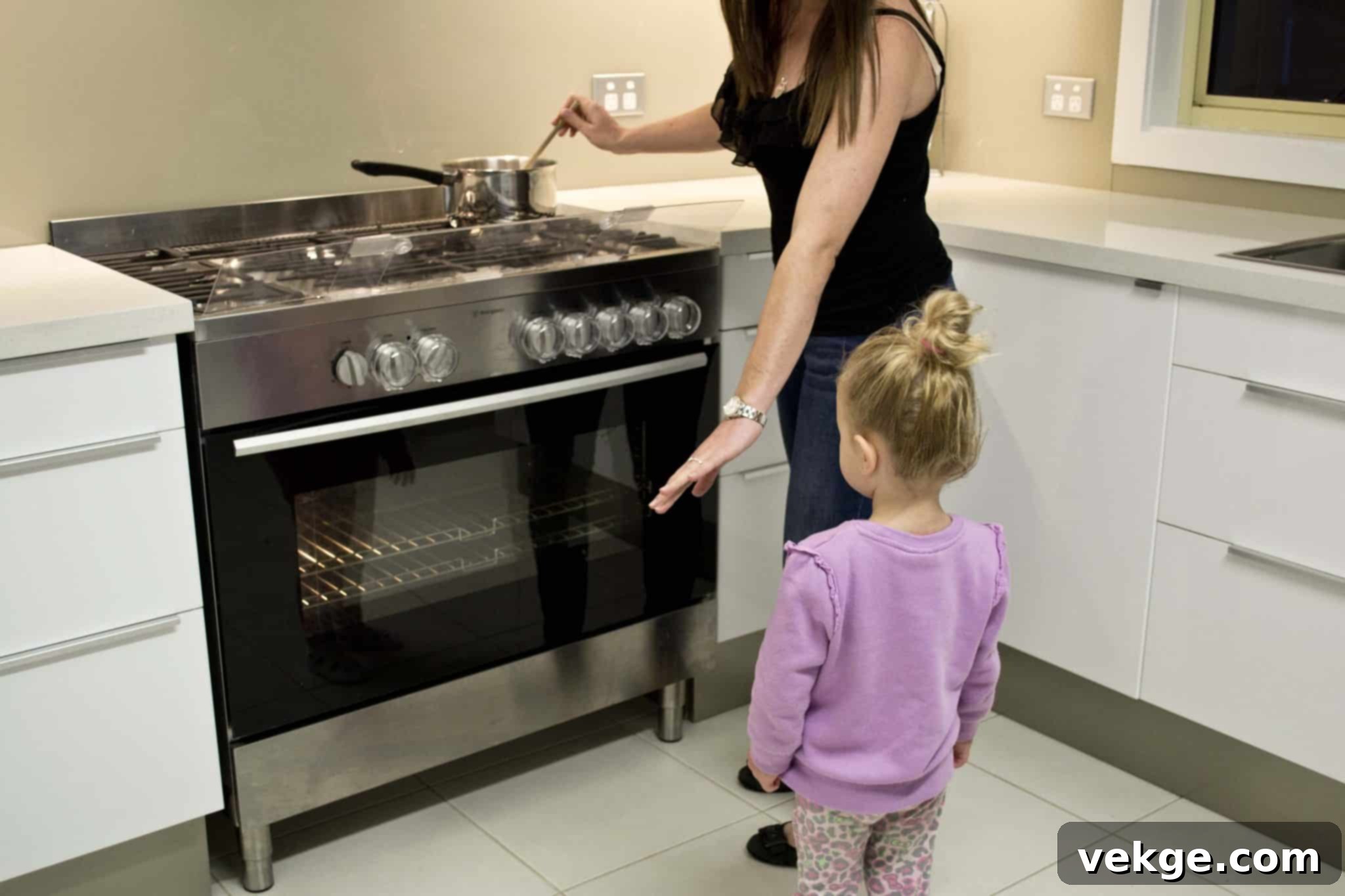Unlocking Peace of Mind: Essential Safety Features in Modern Home Appliances
The rapid evolution of technology has transformed our homes, making modern appliances indispensable tools that simplify daily life. These sophisticated machines are no longer just basic utilities; they are intelligent, multi-tasking powerhouses designed for precision, efficiency, and unparalleled convenience. From automated cooking to smart climate control, their ability to perform complex tasks quickly and flawlessly has fueled an enormous demand, integrating them seamlessly into nearly every household.
While the benefits of these technological marvels are undeniable, offering us more free time and elevated living standards, it’s crucial to acknowledge the inherent duality. Every advanced piece of machinery, if not properly maintained or controlled, carries potential risks. Unseen hazards, ranging from minor malfunctions to life-threatening incidents, can arise from everyday appliances if safety is overlooked. This awareness has driven engineers and manufacturers to embed robust safety mechanisms into the core design of modern appliances, mitigating potential dangers and ensuring peace of mind for users. These innovative safety features are a testament to a commitment to consumer protection, transforming potential liabilities into secure, user-friendly solutions. Let’s explore some of these crucial advancements that make our homes safer.
Manufacturers have invested heavily in research and development to address these concerns head-on, incorporating a multitude of intelligent safety features into their designs. This proactive approach ensures that while you enjoy the incredible capabilities of your modern appliances, your safety and the safety of your loved ones remain the top priority. These aren’t just add-ons; they are fundamental components that define the reliability and trustworthiness of today’s home technology. Let’s take a closer look at some of the most impactful and widely adopted safety features:
1. Automatic Shut-Off: A Guardian Against Forgetfulness
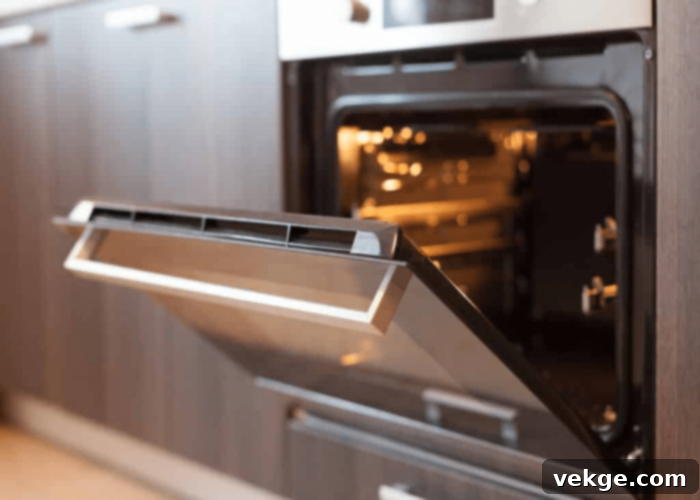
One of the most widely appreciated and subtly powerful safety features is the automatic shut-off function. Designed to prevent accidents caused by user forgetfulness, this feature is integrated into a vast array of modern appliances. Consider your electric iron: leaving it unattended for too long could lead to scorches or even fires. Many modern irons now detect inactivity, typically after a few minutes in an upright position or a shorter period if tipped over, and automatically cut power. Similarly, ovens, coffee makers, hair straighteners, and electric kettles are frequently equipped with this technology.
Beyond preventing potential fire hazards and accidental burns, the automatic shut-off feature offers significant environmental and economic benefits. By powering down devices that are no longer in active use, it substantially reduces unnecessary electricity consumption. This not only lowers your utility bills but also contributes to energy conservation and a smaller carbon footprint, aligning perfectly with modern eco-conscious living. It’s a prime example of how intelligent design provides both critical safety and sustainable operation.
2. Child Lock: Protecting Our Youngest and Most Vulnerable
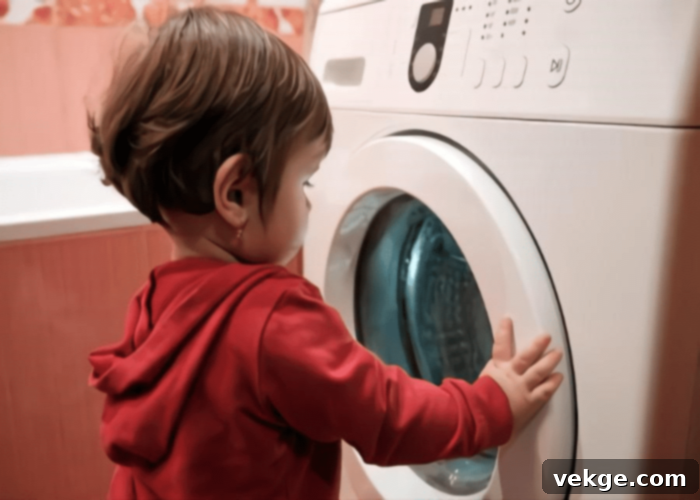
For households with young children, the child lock feature is an absolute necessity, providing an invaluable layer of protection against curious hands. Appliances like washing machines and dryers often incorporate physical or electronic locks that prevent doors from opening during operation or can completely disable the controls. This is critical for preventing tragic accidents, such as a child climbing into a machine and getting trapped or injured by moving parts. Dishwashers, ovens, and even refrigerators (to prevent access to ice dispensers or temperature controls) also frequently include this safeguard.
The scope of child locks has expanded beyond traditional kitchen and laundry appliances. Modern televisions and smart devices now come with sophisticated parental controls and content locks, ensuring that children cannot access inappropriate content, make unauthorized purchases, or change important settings. This digital safety net is vital in an increasingly connected world, protecting children from content that could negatively impact their mental health and development. The child lock feature epitomizes proactive accident prevention, offering parents peace of mind that their home environment is safe for their little ones.
3. Overheat Protection: Guarding Against Thermal Damage

Overheating is a common issue that can plague electrical devices, especially during prolonged use or in high ambient temperatures. Beyond merely affecting performance, excessive heat can cause internal damage to an appliance, reduce its lifespan, and, more critically, pose a significant fire risk. To combat this, manufacturers integrate various overheat protection mechanisms. Appliances such as space heaters, hair dryers, toasters, and blenders often feature thermal cut-offs that automatically interrupt the power supply if the internal temperature exceeds a safe threshold. Once the device cools down to an acceptable level, power can typically be restored, allowing for continued safe operation.
For more complex electronics like laptops, gaming consoles, and some smart home hubs, overheating is managed through active cooling systems. These devices incorporate internal mini-fans, strategically placed air vents, and heat sinks to facilitate robust air circulation and dissipate heat away from sensitive components. This continuous thermal management prevents performance throttling, extends component life, and crucially, prevents the device from becoming a fire hazard. Overheat protection is a fundamental safety measure, ensuring the longevity of your appliances and the safety of your home.
4. Tilt and Fall Sensors: Stabilizing Your Environment
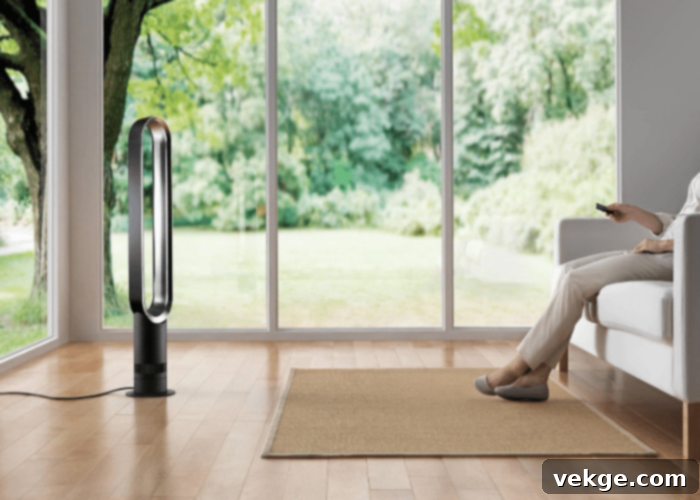
Modern home design often embraces sleek, often vertical, appliances that can be prone to tipping if accidentally bumped or positioned on an uneven surface. Tilt and fall sensors are a clever innovation designed to address this vulnerability, particularly in devices with moving parts or heating elements. Tower fans, for instance, have become increasingly popular for their elegant design and efficient air circulation. These fans, along with many portable space heaters, are frequently equipped with tilt sensors.
Should the appliance be accidentally knocked over or tilted beyond a safe angle, these sensors instantly detect the change in orientation. Upon detection, they trigger an immediate shutdown of the device, halting any high-speed moving blades or active heating elements. This rapid response prevents injuries from exposed fan blades, reduces the risk of fires from overturned heaters, and generally minimizes damage to both the appliance and its surroundings. It’s a crucial feature for households with pets, active children, or simply for ensuring stability in a dynamic living space.
5. Emergency Stop Buttons: Immediate Control in Critical Moments
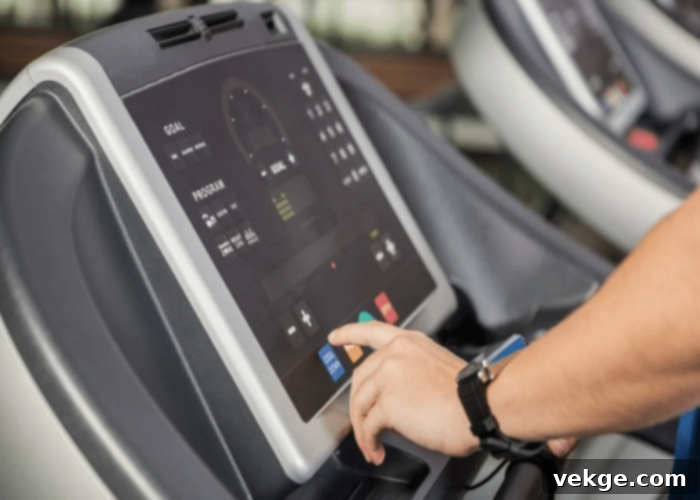
While most appliances have standard on/off switches, certain situations demand an immediate and unequivocal halt to operation. For these critical moments, many modern appliances are equipped with an emergency stop button. These buttons are typically large, prominently colored (often red), and clearly labeled for instant recognition and access. You’ll commonly find them on equipment where sudden power termination can prevent injury or serious damage, such as treadmills, some high-powered blenders, workshop tools, and even industrial-grade kitchen equipment found in home settings.
The emergency stop button serves as a direct override, bypassing regular operational cycles to cut power instantly. This is invaluable in scenarios like a sudden loss of balance on a treadmill, a foreign object getting caught in a vacuum cleaner, or a mixing blade jamming in a food processor. In such instances, fumbling for a power cord or navigating through complex settings is not an option. The emergency stop button offers a failsafe, allowing for rapid intervention to prevent personal injury or further damage to the appliance or surroundings, underscoring its role as a vital component in user safety.
6. Carbon Monoxide Detectors: The Silent Guardian Against an Invisible Threat
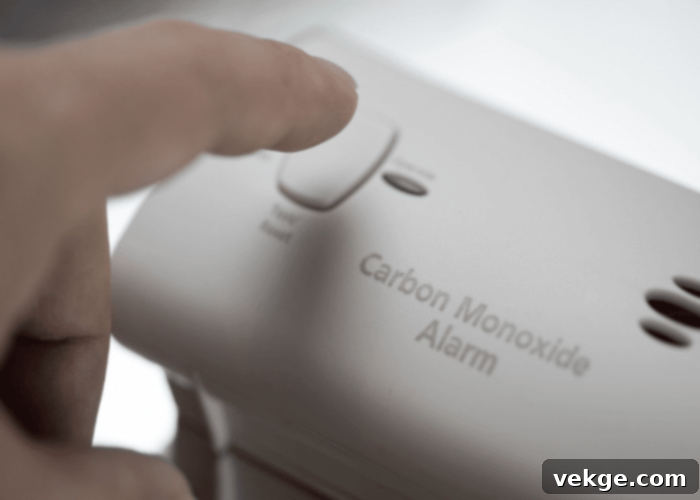
Carbon monoxide (CO) is often referred to as the “silent killer” because it is a colorless, odorless, and tasteless gas that can be deadly. It’s produced by the incomplete combustion of fuel-burning appliances, including furnaces, water heaters, gas stoves, fireplaces, and portable generators. Historically, tragedies occurred when fuel-based room heaters were used in poorly ventilated spaces, leading to lethal concentrations of CO. Modern appliances and comprehensive home safety systems have made significant strides in addressing this peril.
Many contemporary fuel-burning heaters and smart home systems now integrate carbon monoxide detectors. These detectors continuously monitor CO levels in the surrounding air. If dangerous concentrations are detected, they emit a loud alarm, alerting occupants to evacuate and ventilate the area immediately. More advanced systems can even send alerts to your smartphone or trigger automated ventilation systems. The presence of CO detectors, either standalone or integrated into appliances, is an indispensable safety measure for any home, providing early warning against a threat that cannot be perceived by human senses and significantly reducing the risk of CO poisoning.
7. Safety Thermostat: Precision Temperature Control for Comfort and Protection
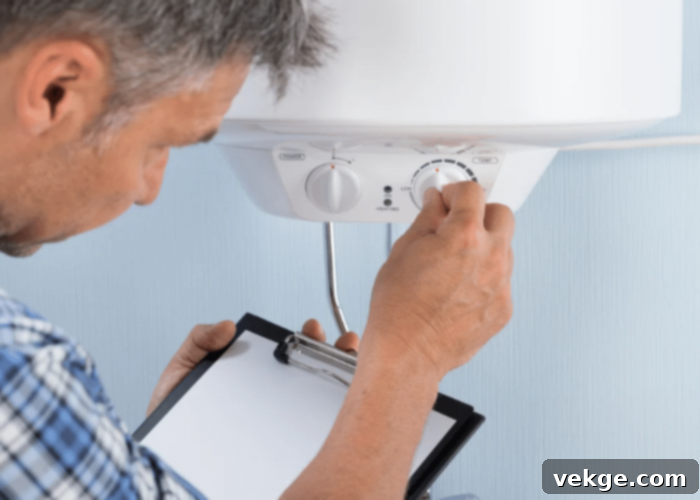
Controlling temperature precisely is not just about comfort; it’s a critical safety concern, especially when dealing with hot liquids or heating elements. The safety thermostat is a significant feature in appliances like water heaters and electric kettles. Its primary function is to regulate the heating process, ensuring that the device reaches a specific, safe temperature and then maintains it or automatically shuts off. For water heaters, this means preventing water from becoming scalding hot, protecting users from severe burns when showering or washing dishes.
In electric kettles, the thermostat ensures water boils quickly but also switches off power once boiling point is reached, preventing dry boiling which can damage the appliance or pose a fire risk. Many advanced electric kettles even feature LED panels displaying the current water temperature, offering greater control and visual confirmation. Beyond safety, intelligent thermostats also contribute to energy efficiency by preventing unnecessary overheating and maintaining desired temperatures more accurately, saving energy and extending the life of the appliance.
8. Pressure Release Valves: A Critical Component for High-Pressure Devices
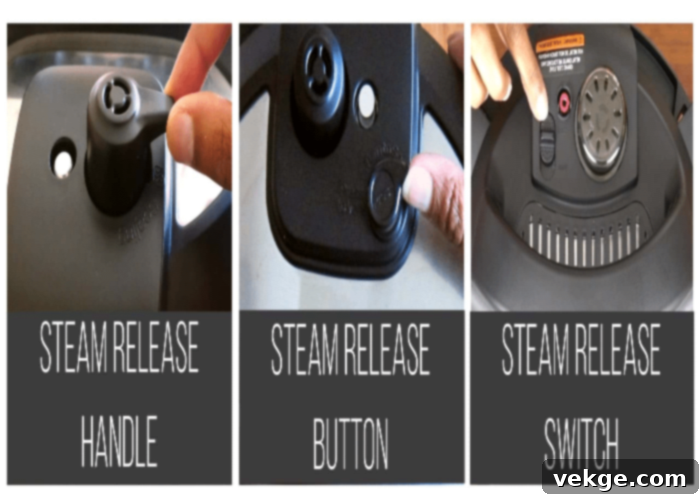
Appliances that operate under pressure, such as pressure cookers, represent a unique safety challenge. If pressure builds up beyond a safe limit without an adequate release mechanism, the consequences can be catastrophic, leading to explosions that can cause severe injury and extensive property damage. To avert such dangers, modern pressure cookers and similar sealed heating systems are equipped with meticulously designed and certified pressure release valves.
These valves act as a safety bypass, automatically venting excess steam and pressure when internal levels reach a predetermined maximum threshold. This ensures that the pressure inside the appliance remains within safe operational limits, preventing dangerous over-pressurization. The reliability of these valves is paramount, which is why they undergo rigorous testing and certification processes to ensure they function flawlessly when needed most. This feature is a non-negotiable component in pressure-based cooking, offering a vital safeguard that turns potentially dangerous kitchen tasks into safe and efficient culinary experiences.
Final Thoughts: A Future Built on Safety and Innovation
As we’ve explored, the journey of modern appliances is not just about convenience and efficiency; it’s fundamentally about integrating robust safety measures that protect individuals and homes. The array of features discussed—from automatic shut-offs and child locks to advanced sensors and pressure release valves—underscore a profound commitment by manufacturers to prioritize consumer safety. These elements are not mere afterthoughts; they are integral components forged from rigorous testing and a deep understanding of potential household hazards.
The statistical improvements in accident prevention directly attributable to these safety features have created a positive feedback loop. Companies continue to invest heavily in research and development, knowing that safety is not only a moral imperative but also a significant selling point that builds consumer trust and loyalty. This symbiotic relationship creates a win-win scenario: consumers benefit from safer, more reliable products, while manufacturers enhance their reputation and market presence through demonstrable quality and care. The evolution of smart home technology further amplifies this trend, with interconnected devices offering even more sophisticated safety monitoring and predictive maintenance capabilities, moving us towards truly holistic home protection.
Beyond their functional and safety attributes, modern appliances also contribute significantly to the aesthetic and comfort of our living spaces. With sleek designs, minimalistic styles, and often personalized customization options, they seamlessly blend into contemporary homes, reflecting individual tastes and preferences. This combination of cutting-edge technology, uncompromising safety, and elegant design ensures that our homes are not just efficient and smart, but also secure, beautiful, and truly the sanctuary we deserve.
